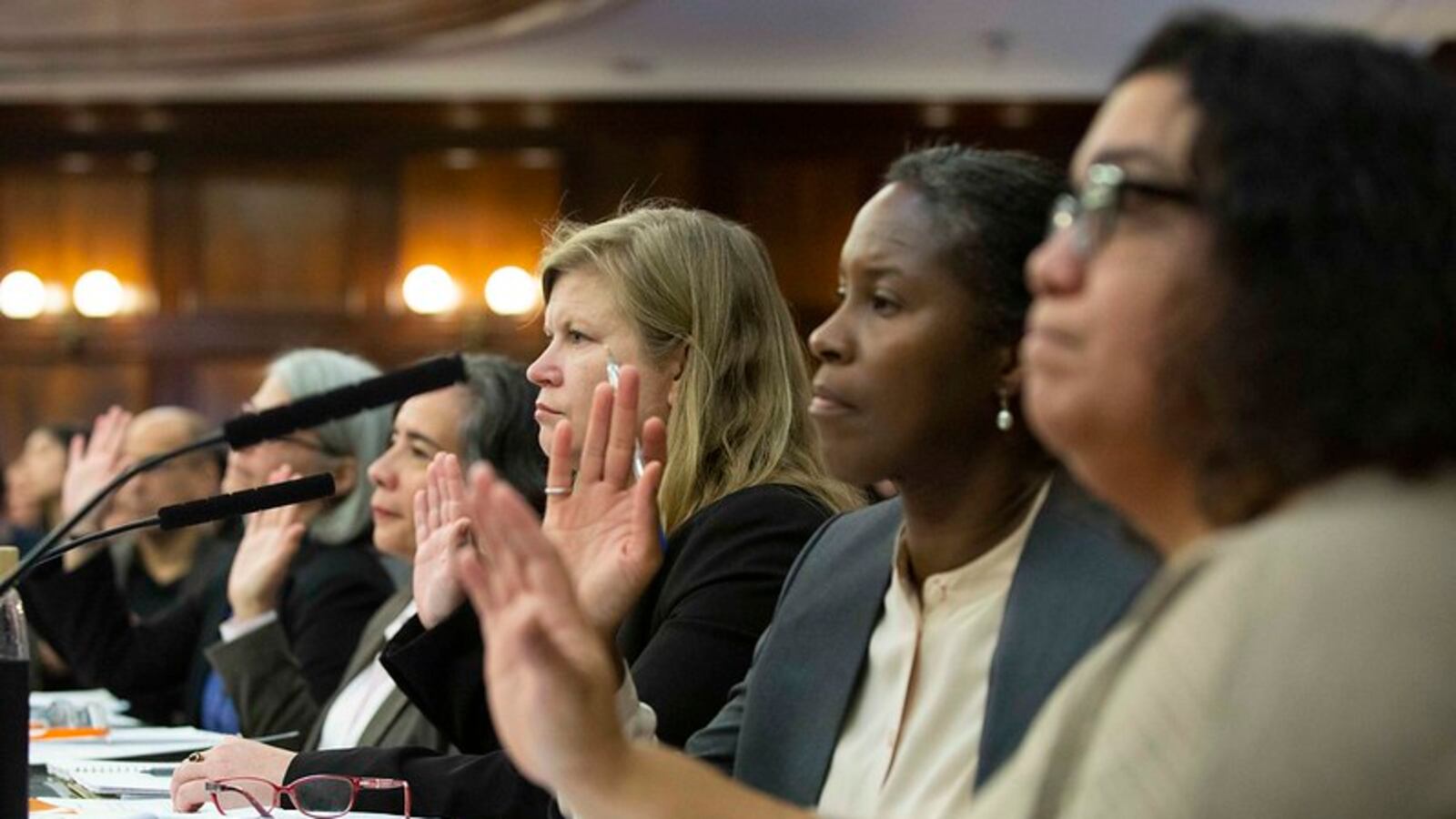City Council members pressed education department officials Wednesday on the robustness of lead inspections in schools and pushed them to release records of past work to remove the toxin.
The questioning was part of an hours-long oversight hearing of lead laws and regulations, which focused on how New York City agencies have fallen short in eradicating childhood lead exposure. It comes nearly a year after Mayor Bill de Blasio announced a renewed plan to eliminate childhood lead exposure by 2029, and a few months after the education department found and fixed lead hazards in 1,860 classrooms before the start of the school year.
Lead exposure at a young age can cause long-lasting developmental delays, is linked to problems with learning, and can cause aggressive behavior. Even after officials testified, Councilman Mark Treyger, who oversees the council’s education committee, remained unhappy with the answers.
“It is clear to me we have a lot more work to do,” Treyger said.
Following a WNYC investigation on lead hazards in schools, the education department conducted a systemwide inspection of classrooms this summer in buildings built before 1985, which are most likely to have lead paint, and that serve children in first grade and younger. For the first time, the department posted results online, but says it has regularly tested classrooms for years by requiring custodians to report peeling paint, which result in chips or dust that children can ingest. Following a custodian’s report, an outside company is supposed to conduct its own test, which includes so-called XRF scanning, or X-rays, to detect lead levels.
Experts have said this protocol follows the letter of the law, but could be improved in several ways, such as testing for lead dust from the start and using an XRF scanner in every classroom whether or not paint is peeling. Treyger, who has advocated for this sort of proactive XRF testing, raised the point again during Wednesday’s hearing, saying the education department’s current procedures are “inaccurate.”
The city hired Ernst & Young to review the city’s lead protocols and will provide a final report by the end of the year, said Kathryn Garcia, the city’s senior advisor for citywide lead prevention and commissioner of sanitation. In August, Chalkbeat requested copies of any contracts with Ernst & Young on this review, but has not yet received any records.
Treyger also pushed Wednesday for the education department to test school hallways. After pressure from city officials, the department said it would test libraries and cafeterias this fall and next month will begin inspecting auditoriums, bathrooms, and gyms in buildings with young children.
Just as Wednesday’s hearing began, officials announced they had inspected 880 old school buildings with young children and found hazardous lead conditions in 326 cafeterias and 171 libraries. Officials removed, sealed, and painted over the deteriorating walls. Students have been allowed back into these areas, according to the education department, since the walls are “covered and inaccessible,” though final dust wipe clearance and more extensive cleaning that started last month won’t be done until the end of the school year.
During the hearing, Treyger questioned whether records of past inspections exist. They do and date back to 2004, said Rana Khan, deputy chief of school operations.
“We’ve asked for those records previously, and they have not been turned over to us,” Treyger said. Chalkbeat filed an open records request in July for inspection data over the past five years, which the city has since delayed. During his own testimony, City Comptroller Scott Stringer said he will subpoena the education department for those records if they don’t release them voluntarily by next month.
Education officials were also asked about their coordination with other city agencies on lead. For example, when a child’s blood test shows high lead levels — anything above 5 micrograms per deciliter — their pediatrician is supposed to report it to city health officials. Then, city inspectors try to find potential sources for the lead by testing places where the child spends a lot of time, such as their apartment or, in some cases, their school. In this case, education department officials would oversee testing inside their schools. Treyger asked if families whose children attend those schools are notified when a classroom is found to have hazardous lead during one of those health-department-prompted investigations. Khan said no.
“That’s a problem, and that has to change,” Treyger said.
Matthew Chachere, a longtime attorney who for years has advocated for stricter enforcement of lead violations in private housing, said it is an “inherent conflict of interest” to allow the education department to visually inspect its own buildings when the health department alerts them to a case of possible lead exposure. Health officials said it is more efficient to have education department staff do their own inspections.
“Suppose there is a child with an elevated level of blood, and the health department said (to an apartment owner), “We have a report, and we will let you do a visual inspection of your apartment,’” Chachere said during his own testimony. “I don’t think anyone would accept that paradigm.”
City officials could not answer a question from Councilman Stephen Levin on whether a school was ever the sole source of lead exposure for any child who had a high level of lead in their blood. Corinne Schiff, deputy commissioner for environmental health, said she would find the answer to Levin’s question but suspected the number was “minuscule.”

